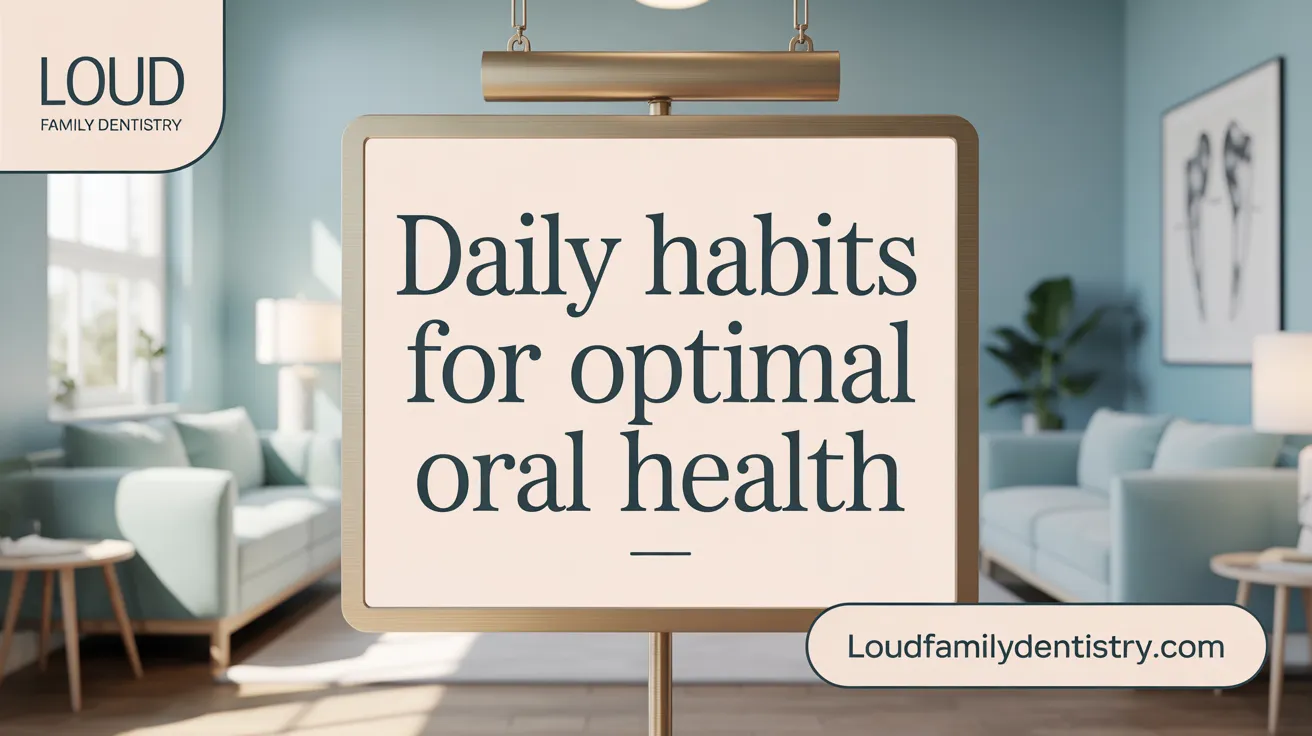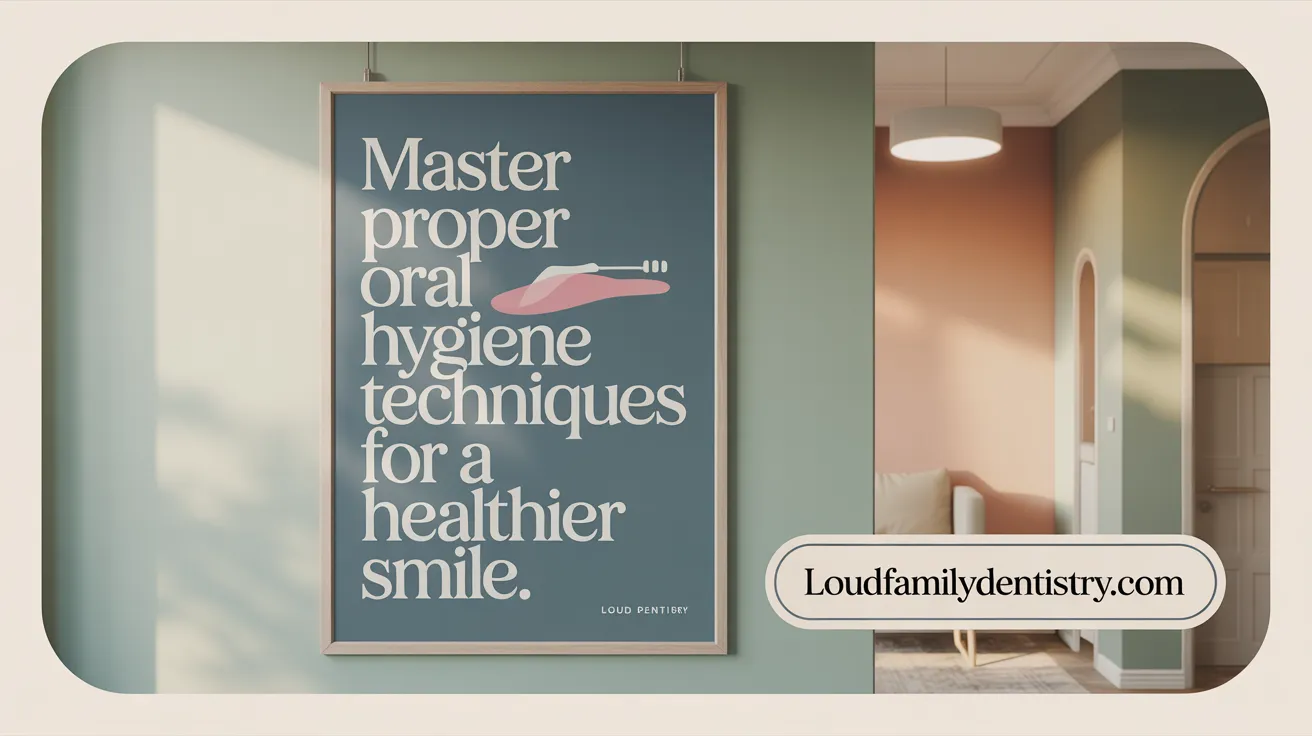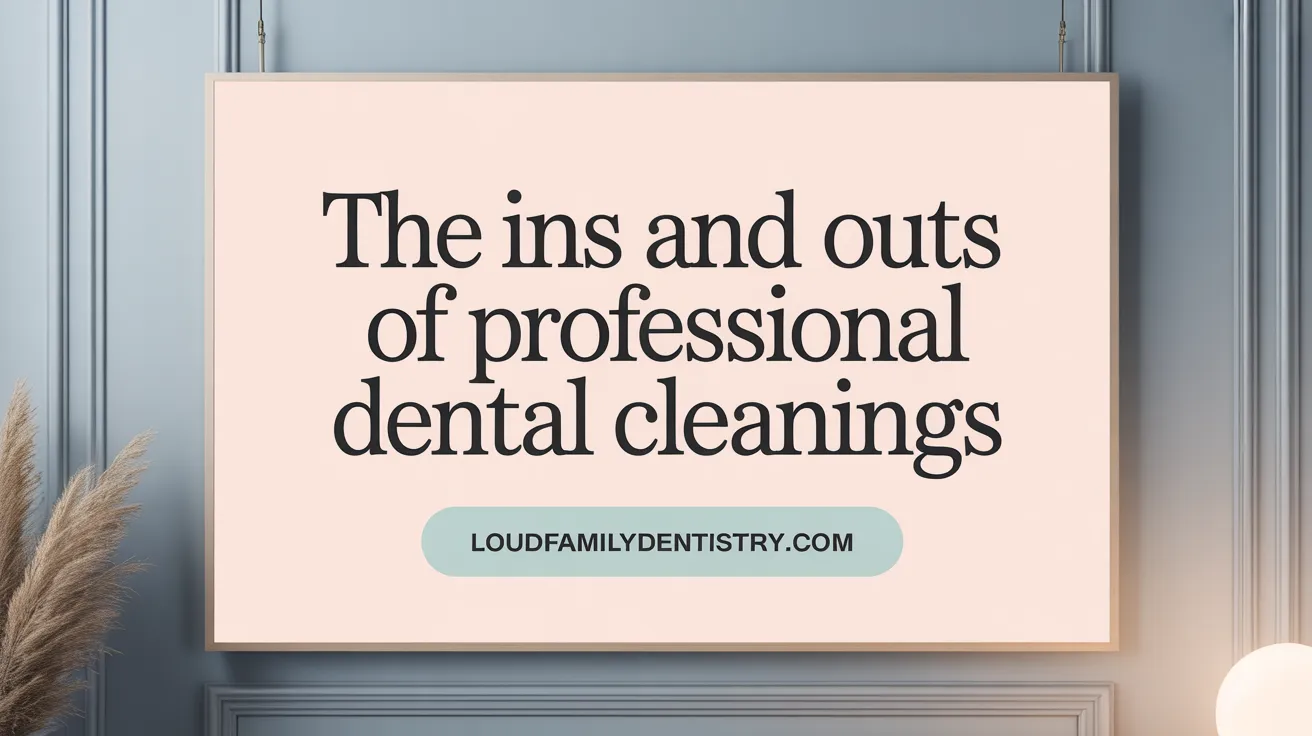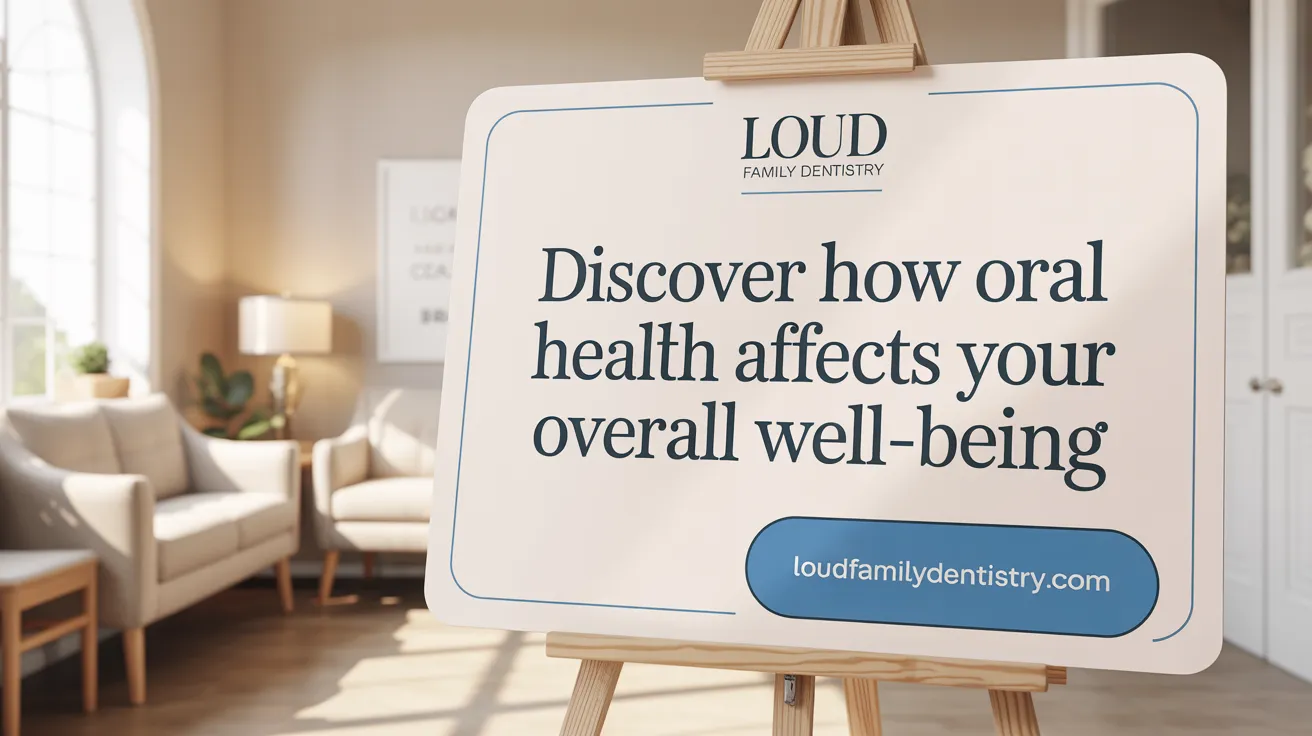Introduction to Optimal Dental Hygiene
Maintaining excellent oral hygiene is crucial not only for a radiant smile but also for overall health. Daily habits combined with professional dental cleanings form the cornerstone of preventing common oral diseases such as cavities and gum disease. This article discusses best practices and practical tips to enhance your dental care routine, ensuring that you maximize the benefits of professional cleanings and maintain long-term oral health.
Fundamental Daily Practices for Effective Oral Hygiene

Optimal brushing techniques
Maintaining good oral health starts with effective brushing. Use a soft-bristled toothbrush and fluoride toothpaste, and position the brush at a 45-degree angle toward the gum line. Employ gentle, circular motions for at least two minutes, covering all surfaces of your teeth and your tongue. This technique helps remove plaque and prevents gum damage.
Daily flossing importance
Flossing daily is crucial because a toothbrush alone cannot reach the tight spaces between teeth. Wrap about 18 inches of floss around your fingers, gently slide it in a ‘C’ shape under the gumline, and move it up and down to dislodge plaque and food particles. Using interdental brushes or water flossers can be effective alternatives for cleaning between teeth.
Use of mouthwash
Incorporating an ADA-approved, alcohol-free antimicrobial mouthwash into your routine provides extra bacteria-fighting power. Swish for about 30 seconds after brushing and flossing to help reduce plaque, freshen breath, and strengthen enamel. Mouthwash is a helpful supplement but should not replace brushing or flossing.
Tongue cleaning
Cleaning your tongue daily with a scraper or toothbrush helps eliminate bacteria responsible for bad breath and other oral health issues. Gently brushing from back to front can significantly improve oral freshness and reduce bacterial buildup. See tongue cleaning tips for details.
Replacing toothbrushes regularly
To keep your cleaning effective, replace your toothbrush or brush head every three to four months, or sooner if the bristles are frayed. Worn brushes are less capable of removing plaque and can harbor bacteria.
Diet and hydration's role in oral health
A balanced diet low in sugary and acidic foods supports teeth and gum health. Drinking plenty of water helps wash away food particles and bacteria, maintaining a neutral pH in the mouth. Consuming crunchy fruits and vegetables, like apples and carrots, can naturally clean teeth surfaces and stimulate saliva production, which aids in remineralizing enamel.
By following these daily routines—brushing properly, flossing, using mouthwash, cleaning your tongue, replacing your toothbrush regularly, and maintaining a healthy diet—you can significantly reduce the risk of cavities, gum disease, and other oral health problems. Regular dental visits every six months will further ensure your smile stays healthy and bright.
Mastering Brushing, Flossing, and Complementary Oral Hygiene Techniques

Proper brushing techniques
Effective brushing involves holding a soft-bristled toothbrush at a 45-degree angle against the gums. Use small, gentle circular or back-and-forth motions to clean all surfaces of each tooth, including the outer, inner, and chewing surfaces. Brushing should last at least two minutes to ensure thorough removal of plaque and food particles. Don't forget to brush the tongue or use a tongue scraper to remove bacteria that can cause bad breath and other oral health issues.
Flossing methods
Daily flossing is crucial for cleaning between teeth where a toothbrush cannot reach. Use about 18 inches of dental floss, wrapping most of it around your middle fingers. Gently slide the floss into the space between teeth, curving it into a C-shape around each tooth and moving it up and down in gentle, controlled strokes. Be careful not to force the floss, which could damage gums. Flossing helps remove plaque, reducing the risk of cavities and gum disease.
Use of interdental tools
For people with wider gaps between their teeth or braces, interdental brushes, water flossers, or floss holders can be effective alternatives. These tools reach areas that traditional floss might miss and can make daily cleaning more manageable. Incorporating these interdental aids helps prevent tartar buildup and gingivitis.
Timing brushing after acidic foods
Avoid brushing immediately after consuming acidic foods or drinks like citrus, tomatoes, soda, or wine. The acids temporarily soften enamel, and brushing right afterward can cause erosion. Instead, rinse your mouth with water and wait at least 30 minutes before brushing to allow enamel to re-harden. This practice is recommended to protect enamel.
Tongue scraping benefits
Cleaning your tongue daily with a scraper or toothbrush helps remove bacteria and food particles that can cause bad breath and contribute to plaque buildup. This simple practice enhances overall oral hygiene, keeps breath fresh, and reduces bacterial load in the mouth. Learn more about the benefits of tongue scraping.
More info search query
"Proper brushing and flossing techniques"
Understanding Professional Dental Cleanings: Importance and Procedures

Why are professional dental cleanings important and what benefits do they offer?
Professional dental cleanings are essential for maintaining excellent oral health. They effectively remove hardened plaque, known as tartar, which cannot be eliminated through regular brushing and flossing alone. This removal helps prevent common dental issues such as cavities, gum disease, and tooth loss.
Beyond cleaning, these visits facilitate early detection of potential problems like cavities, fractures, and oral cancers. Regular cleanings also help brighten your smile by removing stains and freshening breath, contributing to overall confidence (Benefits of good oral hygiene).
The health benefits extend beyond your mouth. Since bacteria from oral infections can impact the heart and other systemic health conditions, professional cleanings can lower risks of heart disease, stroke, and other diseases linked to oral bacteria.
Routine cleanings, generally recommended every six months (Dental checkups every six months), promote proactive care and can save money in the long run by avoiding costly restorative procedures. They support early treatment of issues, ensuring your smile stays healthy and beautiful.
What are the different dental cleaning procedures, including deep cleaning, and when are they recommended?
Dental cleanings vary based on individual needs and the severity of oral health conditions.
Routine prophylaxis cleanings are the most common. Performed every six months, they include removing plaque, tartar, and stains from the surfaces of teeth, preventing cavities and gum disease (Teeth Cleaning San Jose).
Deep cleaning, also called scaling and root planing, is a more thorough procedure recommended for patients with early to moderate gum disease. It involves removing plaque and tartar from below the gumline and smoothing the roots of the teeth to help gums reattach properly (Deep cleaning benefits).
Gross debridement is used when there's an extensive buildup of plaque and tartar, usually for patients who haven't visited a dentist in an extended period. It's a preliminary cleaning that prepares the mouth for a full examination (Teeth Cleaning in San Jose, CA).
Periodontal maintenance is an ongoing treatment for individuals diagnosed with gum disease. It helps control symptoms, prevent progression, and maintain gum health (Periodontal maintenance).
Each type of cleaning plays a vital role in preserving oral health, tailored to your personal dental health status.
| Type of Cleaning | Frequency | Main Purpose | Ideal For | Additional Notes |
|---|---|---|---|---|
| Routine prophylaxis | Every 6 months | Remove plaque, stains | General maintenance | Most common cleaning for healthy gums (Dental cleanings overview) |
| Deep cleaning (scaling and root planing) | As needed | Remove plaque/tartar below gums | Gum disease | Involves anesthesia, longer healing (Deep cleaning explanation) |
| Gross debridement | When needed | Remove extensive buildup | Extended neglect | Prepares mouth for examination |
| Periodontal maintenance | Regularly after diagnosis | Manage gum disease | Patients with periodontitis | Customized schedules based on severity |
More info
Searching "Professional dental cleaning procedures and benefits" will provide additional insights into the importance and specifics of these treatments. Regular visits and tailored care ensure optimal oral health, function, and aesthetics, preventing more serious issues and supporting overall wellness.
Maximizing the Effectiveness of Dental Cleanings Through Daily Habits
To improve the results of professional dental cleaning procedures, adopting comprehensive daily oral hygiene routines is essential. Brushing twice daily with fluoride toothpaste for at least two minutes, using gentle circular motions and reaching all surfaces of each tooth, helps remove plaque and prevent tartar buildup. Proper technique, including angling the brush at 45 degrees to the gum line, maximizes cleaning efficiency.
Supplementing brushing with daily flossing or using interdental brushes is crucial for cleaning between teeth and beneath the gumline, areas that toothbrushes cannot reach. Using about 18 inches of floss, wrapping it around fingers, and curving it into a 'C' shape around each tooth ensures effective plaque removal.
Additional tools such as electric toothbrushes and antimicrobial mouthwashes can significantly boost oral hygiene, especially for individuals with higher risk factors like gum disease or dental implants. Regular dental visits, typically every six months, enable professionals to remove hard-to-eliminate tartar and provide tailored advice to optimize ongoing oral health.
Maintaining a balanced diet low in sugary and acidic foods reduces plaque formation and acid erosion. Avoiding tobacco products not only lowers the risk of oral cancers and gum disease but also improves overall oral cleanliness.
Finally, staying well-hydrated helps maintain saliva production, which naturally neutralizes acids and supports remineralization of tooth enamel. When combined, these daily habits substantially enhance the effectiveness of professional dental cleanings, helping to maintain healthier teeth, gums, and an overall better oral health status.
Preparing for Your Dental Visit: Tips for an Optimized Experience

How can one effectively prepare for and optimize a professional dental visit?
A successful dental appointment starts with good pre-visit preparation. Patients should maintain a consistent oral hygiene routine that includes brushing twice a day with fluoride toothpaste, using gentle circular motions at a 45-degree angle toward the gums, and flossing daily to remove plaque and food particles.
Gathering all relevant medical information is crucial. This includes a list of current medications, medical conditions, allergies, and any recent dental concerns or symptoms such as tooth pain, bleeding gums, or sensitivity (importance of medical histories in dental visits).
Arrive at the appointment with a clear list of questions or problems to discuss with the dentist. This ensures that any specific concerns are addressed during the visit.
Confirm the appointment details ahead of time—date, time, and any instructions such as fasting or avoiding certain foods or drinks if required. This helps prevent last-minute surprises and ensures the dentist has all necessary information (dental cleaning appointment tips).
Open communication about dental anxiety or fears is important. Informing your dental care team allows them to offer appropriate comfort measures, such as sedation options or a gentle approach, making the experience smoother.
Consistently practicing good oral hygiene—brushing and flossing well before the appointment—can reduce plaque buildup and make the cleaning process more efficient.
By preparing thoroughly, patients can help their dental team perform more effective treatments, reduce appointment duration, and achieve better oral health outcomes. Regular visits combined with good home care form the foundation of a healthy, radiant smile.
The Connection Between Oral and Overall Health

What is the connection between oral health and overall health?
Oral health is deeply intertwined with overall systemic health. Research consistently shows that poor oral hygiene and periodontal disease are linked to more serious conditions such as diabetes, heart disease, stroke, Alzheimer’s disease, and pregnancy complications (oral health and overall health).
These connections are driven by several mechanisms. A key factor is microbial dysbiosis—the imbalance of bacteria in the mouth—that can lead to inflammation and immune responses affecting other parts of the body. For example, bacteria and viruses from the mouth can enter the bloodstream or tissues, promoting inflammation that contributes to cardiovascular problems (oral health and cardiovascular disease).
Advances in microbiome research have provided new insights into how shifts in the oral microbial community influence both oral and systemic health. Chronic inflammation in the mouth, especially in gum disease, releases inflammatory markers like C-reactive protein, which have been associated with increased risk of heart disease and other inflammatory conditions (oral health and systemic health).
Furthermore, systemic diseases such as diabetes can impair oral health, creating a cyclical effect that worsens both conditions. In pregnant women, periodontal disease has been linked to adverse outcomes like preterm birth. This bidirectional relationship underscores the importance of integrated healthcare approaches, where dental and medical professionals collaborate to improve overall health (oral health during pregnancy).
Maintaining good oral hygiene through regular brushing, flossing, and dental checkups is essential not only for preserving teeth and gums but also for preventing and managing broader health issues. Recognizing the mouth as a window to overall health highlights the need for comprehensive health strategies that include oral care as a core component (Proper oral hygiene techniques, Routine dental visits, Benefits of good oral hygiene).
Lifestyle Habits and Resources to Support Optimal Dental Care
Maintaining healthy teeth and gums hinges significantly on supportive lifestyle habits and access to reliable information. A balanced diet rich in essential vitamins and minerals, such as calcium, phosphorus, vitamins A, C, and D, plays a crucial role. Limiting sugary, starchy, and acidic foods helps prevent cavities and enamel erosion. Staying well-hydrated with water or milk supports saliva production, which naturally shields teeth from decay.
Regular oral hygiene practices are vital—brushing teeth twice daily with fluoride toothpaste and flossing daily remove plaque-causing bacteria and food particles. Incorporating interdental cleaners, like water flossers or interdental brushes, enhances cleaning effectiveness, especially for those with braces or wider gaps. Routine dental check-ups and professional cleanings, typically every six months, enable early detection of issues such as gum disease or cavities, safeguarding long-term oral health.
Avoidance of tobacco products and limiting alcohol intake are essential strategies—smoking notably increases risks for gum disease and oral cancers, while excessive alcohol can harm oral tissues. Protective gear during sports helps prevent physical damage to teeth.
For guidance and current best practices, reputable resources include the American Academy of Periodontology and the American Dental Association, which provide evidence-based information on periodontal health. Public health platforms like the CDC offer guidelines and statistics on gum disease prevalence, emphasizing prevention and early intervention. Consulting licensed dental professionals ensures personalized oral health strategies aligned with individual risk factors.
By combining these healthy habits with credible resources, individuals can effectively support and maintain optimal dental and periodontal health throughout their lives.
Sustaining Oral Health Through Consistent Care
Implementing and maintaining best practices for daily oral hygiene is fundamental to enhancing the benefits derived from professional dental cleanings. Through proper brushing, flossing, and lifestyle choices such as a balanced diet and avoiding tobacco, individuals can prevent common dental diseases and support overall health. Regular professional cleanings not only preserve oral health but also serve as a critical checkpoint for early disease detection. By combining diligent at-home care with periodic dental visits and informed lifestyle habits, one can achieve optimal oral hygiene, a healthier smile, and improved systemic well-being.
